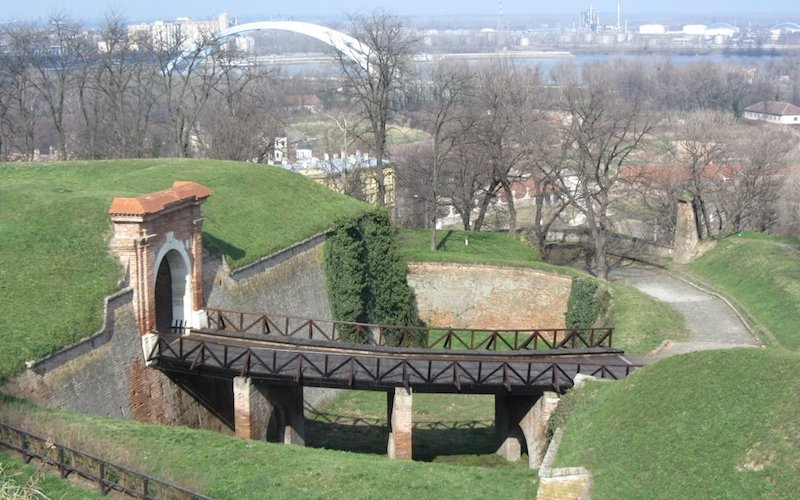Petrovaradin Fortress
Nicknamed ‘Gibraltar on the Danube’, Petrovaradin Fortress is a 17th century fortified structure in Novi Sad, Serbia. There has been a fortress on the site by the River Danube since the Bronze Age; the first fortifications on the site of Petrovaradin Fortress were built by the Romans and expanded by Cisterian monks in the 13th century. In 1991, Petrovaradin Fortress was made a member of the Spatial Cultural-Historical Units of Great Importance list in Serbia.
The remains of a Paleolithic settlement at the upper fortress was found dating back to 19,000 to 15,000 BC, establishing that since there has been continuous settlement on the site. Ramparts found in 2005 suggest their was a fortified settlement existed at Petrovaradin. When the Romans arrived, they built Cusum the fortress, part of a border along the Danube. The turning point in the area’s history came in 1235 AD when King Bela of Hungry brought over a group of Cistercian monks from France. Between 1247 and 1252, the monks built a monastery on the Roman remains.
Today, Petrovaradin Fortress is a popular tourist destination and visitors can tour its walls as well as its buildings. Walk up the sweeping steps and under the portico gateway, covered in moss, with the impressive whitewashed clock tower standing above. One of the most popular aspects of Petrovaradin Fortress is its catacombs, which are believed contain the riches of Serbia’s medieval leaders.







